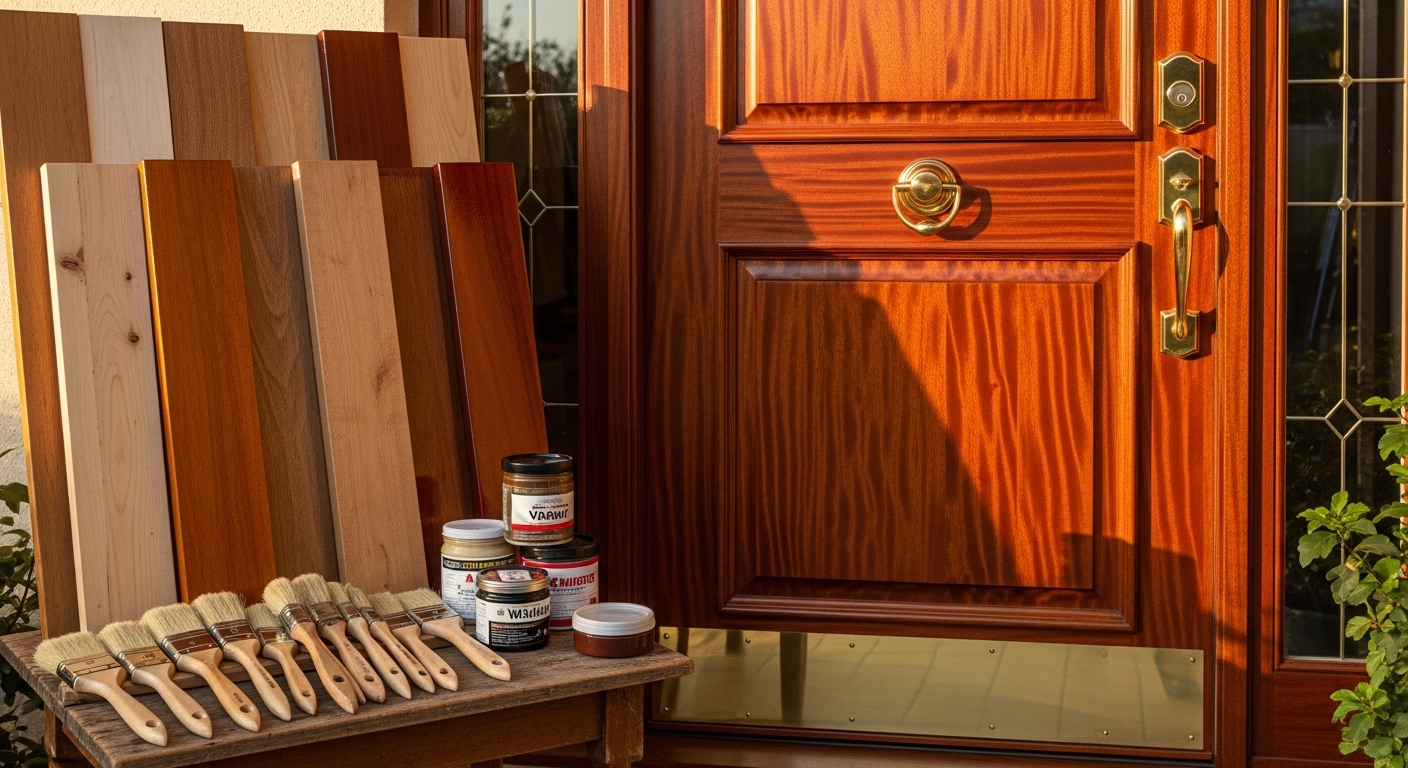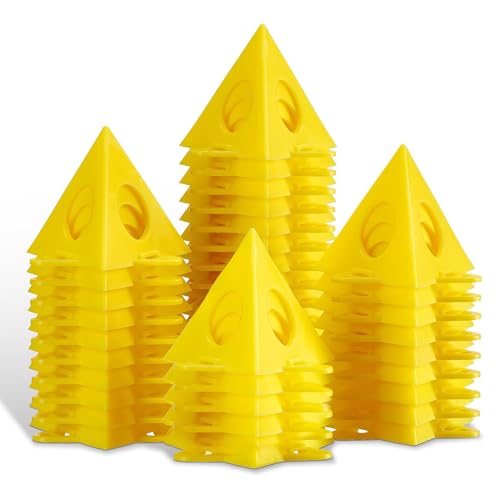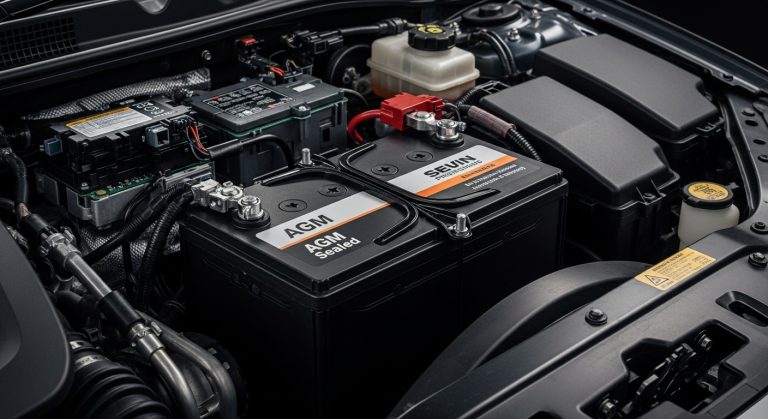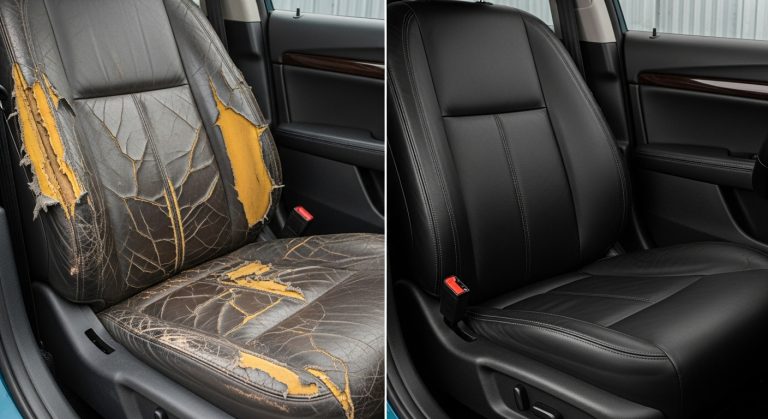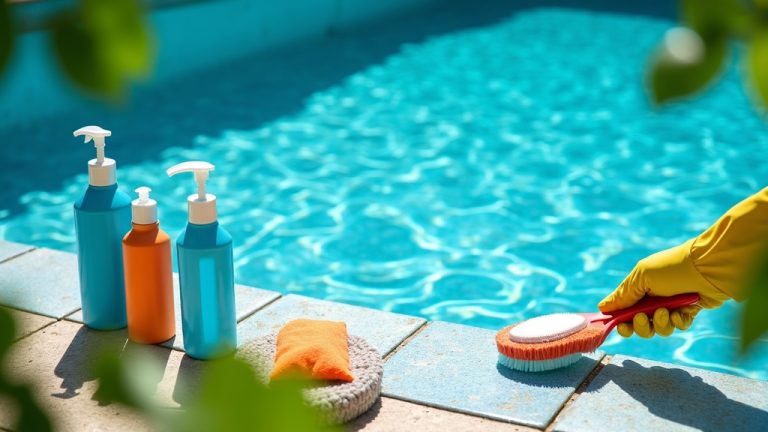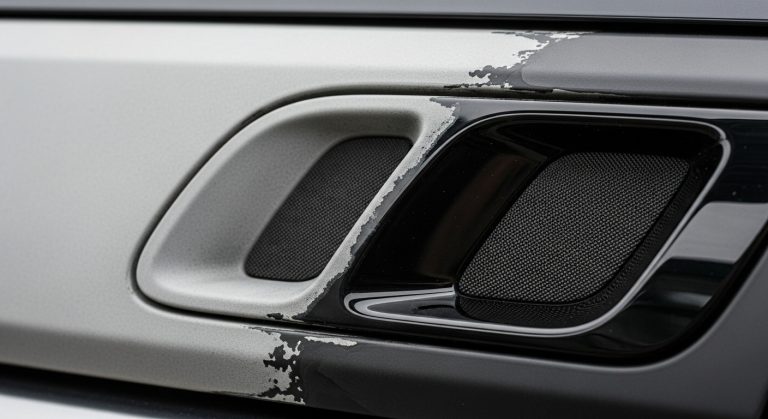Best Finish for Exterior Wood Door: Complete Guide
Your exterior wood door deserves the ultimate protection against harsh weather elements. The wrong finish can lead to costly repairs and replacements within just a few years.
Marine-grade spar varnish and high-quality polyurethane are the top choices for exterior wood doors, offering superior UV protection and moisture resistance. Paint provides the longest-lasting protection, while oil-based finishes penetrate deeply for enhanced durability.
This comprehensive guide reveals professional secrets that will save you thousands in door replacement costs. You’ll discover which finishes work best for different climates and exposure levels. Transform your entrance into a stunning, weather-resistant focal point that lasts for decades.
Key Takeaways
- Marine-grade spar varnish and high-quality polyurethane are the top choices for protecting exterior wood doors, offering exceptional UV and moisture resistance.
- Paint provides the longest-lasting protection and is ideal for doors exposed to harsh weather or direct sunlight, especially when lighter colors are used.
- Sikkens/PPG ProLuxe and other advanced systems allow for easy maintenance and recoating without the need for complete stripping, making them a great low-maintenance option.
- Surface preparation is crucial—thorough sanding, cleaning, and priming ensure the longevity and effectiveness of any finish applied.
- Climate plays a major role in finish selection; marine varnishes excel in humid or coastal areas, while UV-stabilized products are best for sunny regions.
- Regular maintenance and inspection—including cleaning and timely recoating—are essential for keeping your door looking beautiful and protected year-round.
- Choosing the right finish not only enhances curb appeal but also saves money in the long run by preventing costly repairs and replacements.
About Exterior Wood Door Finishes
Choosing the right finish for your exterior wood door is crucial for long-term durability and aesthetic appeal. The finish acts as a protective barrier against moisture, UV rays, and temperature fluctuations that can damage unprotected wood.
Weather exposure is the primary factor determining finish selection. Doors facing south receive intense UV radiation, while those in coastal areas battle salt air and humidity. Understanding your specific environmental challenges helps narrow down the best finish options.
Types of Wood Door Finishes
Different finish types offer varying levels of protection and maintenance requirements. Clear finishes showcase natural wood grain, while opaque finishes provide maximum protection but hide wood beauty.
Penetrating finishes soak into wood fibers for deep protection, whereas surface finishes create a protective film on top. Each approach has distinct advantages depending on your priorities and maintenance preferences.
Climate Considerations
Humid climates require finishes with excellent moisture resistance to prevent warping and rot. Dry climates with intense sun exposure need superior UV protection to prevent fading and cracking.
Temperature fluctuations cause wood expansion and contraction, making flexibility a crucial finish characteristic. Marine-grade products excel in these challenging conditions due to their enhanced elasticity.
Marine-Grade Spar Varnish: The Premium Choice
Marine-grade spar varnish represents the gold standard for exterior wood door protection. Originally developed for boat applications, this finish withstands the harshest marine environments imaginable.
The superior elasticity of spar varnish allows it to flex with wood movement without cracking. This flexibility prevents moisture infiltration that leads to wood rot and structural damage.
Application Process
Surface preparation is critical for optimal spar varnish performance. Sand the door thoroughly and remove all dust before applying the first coat. Clean, dry conditions ensure proper adhesion and curing.
Apply three thin coats rather than one thick coat for maximum durability. Sand lightly between coats with fine-grit sandpaper to promote adhesion. Allow each coat to cure completely before applying the next.
Maintenance Requirements
Regular inspection helps identify wear before major problems develop. Look for areas where the finish appears thin or cloudy, indicating the need for recoating.
Recoating every 2-3 years maintains optimal protection levels. Clean the surface thoroughly and apply a fresh coat without stripping the existing finish. This maintenance schedule prevents costly complete refinishing projects.
Polyurethane: Durable and User-Friendly
Exterior-grade polyurethane offers excellent protection with easier application than marine varnish. Modern formulations include UV inhibitors and moisture resistance comparable to traditional spar varnish.
Water-based polyurethane dries quickly and has low odor, making it ideal for DIY applications. Oil-based versions provide deeper penetration and longer-lasting protection but require more drying time.
UV Protection Features
UV-stabilized formulations prevent sun damage that causes wood graying and finish breakdown. These additives significantly extend the time between recoating cycles in sunny climates.
Gloss levels affect UV protection, with higher gloss providing better reflection of harmful rays. Semi-gloss offers a good balance between protection and aesthetic appeal for most applications.
Application Tips
Temperature control during application ensures proper curing and finish quality. Apply polyurethane when temperatures are between 50-80°F with low humidity for best results.
Brush selection impacts finish quality significantly. Use high-quality natural bristle brushes for oil-based products and synthetic brushes for water-based formulations.
Paint: Maximum Protection and Longevity
High-quality exterior paint provides the longest-lasting protection for wood doors exposed to harsh conditions. Paint creates an impermeable barrier that blocks moisture and UV radiation completely.
Color selection affects durability, with lighter colors reflecting heat and UV rays better than dark colors. White and light gray paints typically last longest in sunny climates.
Paint Types and Performance
Oil-based paints penetrate wood fibers deeply and provide excellent adhesion on properly prepared surfaces. They cure slowly but create an extremely durable finish that resists chipping and peeling.
Water-based paints dry quickly and have lower VOC content, making them environmentally friendly. Modern acrylic formulations offer durability comparable to oil-based products with easier cleanup.
Surface Preparation
Proper priming ensures optimal paint adhesion and longevity. Use a high-quality wood primer designed for exterior applications to seal the wood and prevent tannin bleeding.
Sanding between coats creates a smooth, professional finish. Use progressively finer grits, starting with 120-grit and finishing with 220-grit sandpaper for best results.
Oil-Based Finishes: Natural Protection
Penetrating oil finishes soak deep into wood fibers, providing protection from within. These finishes enhance natural wood grain while offering moderate weather resistance.
Tung oil and linseed oil are popular natural options that create a warm, rich appearance. They require more frequent reapplication but are easier to maintain than film-forming finishes.
Application Techniques
Flood coating ensures complete penetration into wood pores. Apply oil liberally and allow it to soak in for 15-20 minutes before wiping excess material from the surface.
Multiple thin coats build up protection gradually. Apply 3-4 coats, allowing each to cure completely before applying the next. This method creates deeper penetration than single heavy applications.
Maintenance Schedule
Annual recoating maintains optimal protection levels with oil finishes. Clean the surface and apply a fresh coat without stripping the existing finish.
Spot treatment addresses wear areas before they become problematic. Touch up high-wear areas like door handles and lock areas more frequently than the entire door.
Specialty Finishes: Sikkens and Advanced Systems
Sikkens door and window finish represents advanced European technology designed for easy maintenance. This system allows recoating without stripping when the finish begins to fade.
Two-part systems combine base coats and topcoats for enhanced performance. These professional-grade products offer superior durability but require careful application techniques.
Maintenance Advantages
Recoat capability eliminates the need for complete stripping when maintenance is required. Simply clean the surface and apply a fresh coat for renewed protection.
Extended service life reduces long-term maintenance costs despite higher initial investment. These systems often last 5-10 years between major maintenance cycles.
Application Considerations
Professional installation may be recommended for complex systems. The specialized application techniques and longer curing times require experience for optimal results.
Climate sensitivity affects application timing and curing. Follow manufacturer recommendations carefully for temperature and humidity conditions during application.
Finish Selection Guide
| Finish Type | Durability | UV Protection | Maintenance | Best For |
|---|---|---|---|---|
| Marine Spar Varnish | Excellent | High | 2-3 years | Exposed locations |
| Polyurethane | Very Good | Good | 2-3 years | General use |
| Paint | Outstanding | Excellent | 5-6 years | Maximum protection |
| Oil Finishes | Good | Moderate | 1-2 years | Natural appearance |
| Sikkens System | Excellent | High | 5-10 years | Low maintenance |
Climate-Specific Recommendations
Coastal environments benefit from marine-grade finishes designed to resist salt air and high humidity. These conditions accelerate finish breakdown in standard products.
Desert climates require maximum UV protection to prevent rapid finish degradation. Light-colored paints or UV-stabilized clear finishes work best in these conditions.
Northern climates with freeze-thaw cycles need flexible finishes that won’t crack with temperature changes. Marine varnishes and high-quality polyurethanes excel in these conditions.
Application Best Practices
Surface preparation determines finish longevity more than product selection. Remove all old finish, sand thoroughly, and clean completely before applying new finish.
Environmental conditions during application affect cure quality and adhesion. Avoid application during high humidity, extreme temperatures, or windy conditions.
Tools and Equipment
Quality brushes produce superior results compared to cheap alternatives. Natural bristle brushes work best with oil-based products, while synthetic brushes suit water-based finishes.
Spray equipment can provide smooth, even coverage for large doors. However, brush application often provides better penetration and adhesion for exterior applications.
Safety Considerations
Proper ventilation is essential when working with solvent-based finishes. Work outdoors or in well-ventilated areas to avoid harmful vapor exposure.
Fire safety requires careful disposal of oil-soaked rags, which can spontaneously combust. Store used rags in water-filled metal containers before disposal.
Maintenance and Care
Regular inspection helps identify problems before they become serious. Check for finish wear, wood damage, and hardware issues during routine cleaning.
Cleaning schedule should include monthly washing with mild soap and water. Avoid harsh chemicals that can damage the finish or strip protective coatings.
Seasonal Maintenance
Spring preparation involves thorough cleaning and inspection after winter weather. Apply touch-up coats to areas showing wear before summer UV exposure intensifies.
Fall protection includes final cleaning and minor repairs before winter weather arrives. Ensure all cracks and gaps are sealed to prevent moisture infiltration.
Common Problems and Solutions
Finish failure typically appears as peeling, cracking, or cloudiness. Address these issues promptly to prevent wood damage that requires expensive repairs.
Wood movement can cause finish cracking at joints and edges. Use flexible finishes and proper sealing techniques to minimize these problems.
Frequently Asked Questions
How often should I refinish my exterior wood door?
Refinishing frequency depends on finish type and exposure conditions. Clear finishes typically need recoating every 2-3 years, while paint can last 5-6 years.
Visual inspection provides the best indicator of refinishing needs. When the finish looks dull or water no longer beads on the surface, it’s time for maintenance.
Can I apply new finish over existing finish?
Compatibility between old and new finishes determines whether stripping is necessary. Most clear finishes can be recoated after proper cleaning and light sanding.
Paint over stain requires careful preparation and appropriate primer selection. Test compatibility in an inconspicuous area before proceeding with full application.
What’s the best finish for a door that gets full sun exposure?
Paint provides maximum UV protection for doors in full sun exposure. Light colors reflect heat and UV rays better than dark colors or clear finishes.
Marine-grade spar varnish offers the best clear finish option for sunny locations. Its UV inhibitors and flexible formula resist sun damage better than standard polyurethane.
How do I prepare a previously painted door for refinishing?
Paint removal may require chemical strippers or extensive sanding depending on paint condition. Remove all loose or peeling paint before applying new finish.
Surface preparation includes thorough cleaning and sanding to create proper adhesion. Prime bare wood areas before applying topcoat for uniform appearance and protection.
Is it worth hiring a professional for door finishing?
Complex finishes like two-part systems or spray applications often benefit from professional expertise. The specialized equipment and techniques justify the additional cost.
DIY capability depends on your skill level and available time. Simple brush-applied finishes are well within most homeowner capabilities with proper preparation.
Transform Your Entrance Today
Your exterior wood door deserves the ultimate protection that only the right finish can provide. Whether you choose marine-grade spar varnish for natural beauty or high-quality paint for maximum durability, proper application and maintenance will reward you with decades of stunning performance.
Don’t let another season pass with inadequate protection. Invest in premium finishes that safeguard your investment while enhancing your home’s curb appeal. Your door is the first impression visitors receive – make it count with professional-grade protection that stands the test of time.

